Where to find L.A.’s hidden cactus ranch and Asian-American landmarks
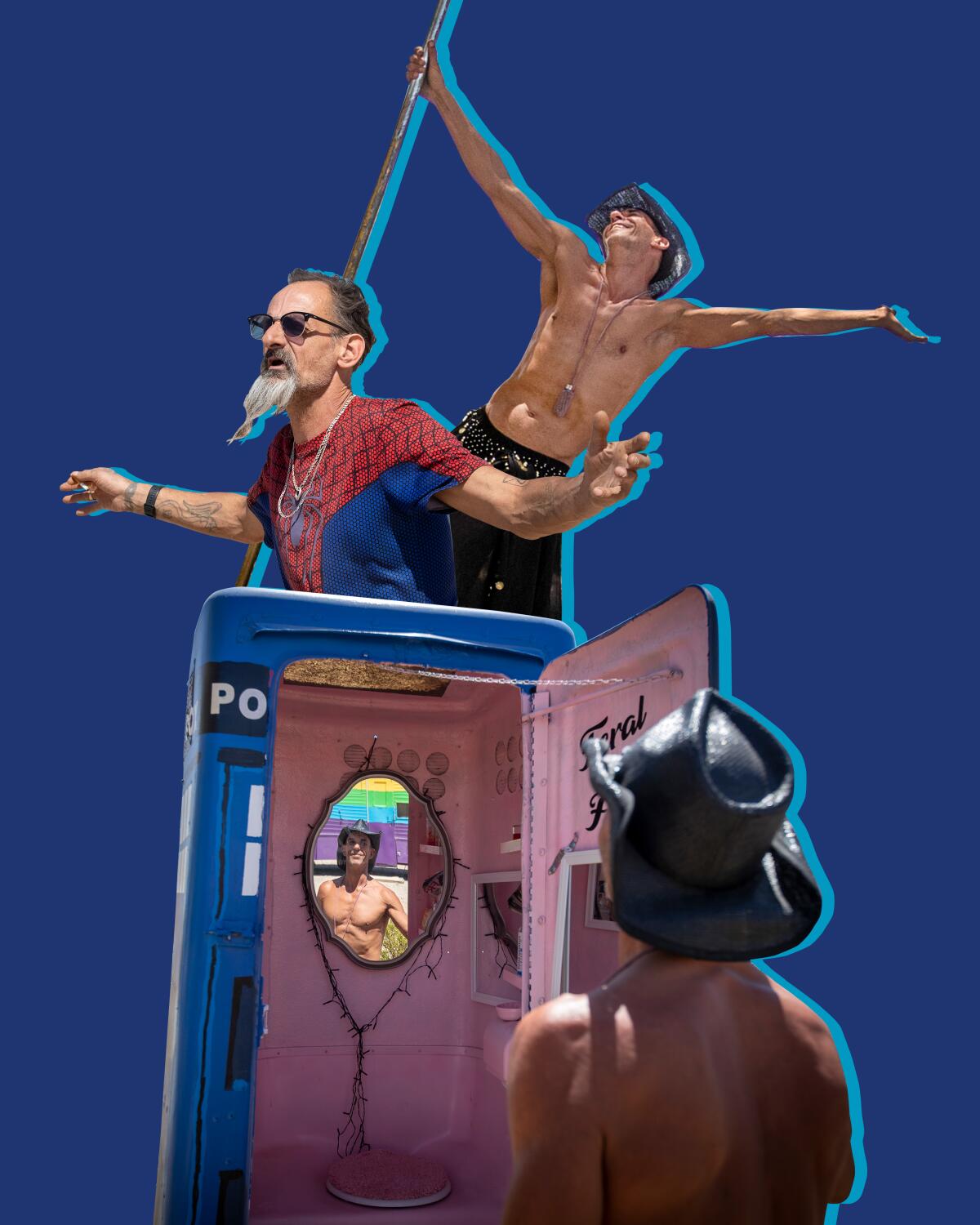
- Share via
By Mary Forgione
Welcome to The Wild! (View in web browser here.)
Did one of Southern California’s most isolated places become even more isolated during the pandemic? You bet. The funky allure of Slab City, which my colleague Priscella Vega calls “the Shangri-La of desert weirdness,” was no match for COVID-19. “The people that come visit me — Iceland, Russia, Japan — stopped coming,” said Rodney “Spyder” Wild, owner of an RV compound he rents on Airbnb.
The squatter’s paradise, which vaguely feels like a free, year-round Burning Man, is in Imperial County on the eastern shore of the Salton Sea about 50 miles north of the border with Mexico. Locals call it “the last free place in America” where there are no rules, no government, no taxes.
And now, no tourists. It’s unlikely they’ll return this summer, though not because of the coronavirus. “Though hangouts such as the Range and Wild’s California Ponderosa RV compound are planning to reopen, many people are preparing to leave before temperatures reach 100. Only a few yearlong residents bear the brunt of the scorching heat,” Vega’s story says.
Officially, Slab City doesn’t exist. It’s a clutter of lean-tos, tents, broken-down buses and RVs arranged in little neighborhoods. The slab in the name refers to the foundations of the one-time U.S. Marine Corps base that served as a training site during World War II. Before ownership reverted to California in 1961, the Marines dismantled the buildings but left the concrete footprints.
If you go, the most notable site in the 92257 ZIP Code for your Instagram feed is Salvation Mountain, a giant, candy-colored structure made of adobe and straw, topped by a cross, with “God is love” painted on its façade. Check out photos and the full story here.
3 things to do this week
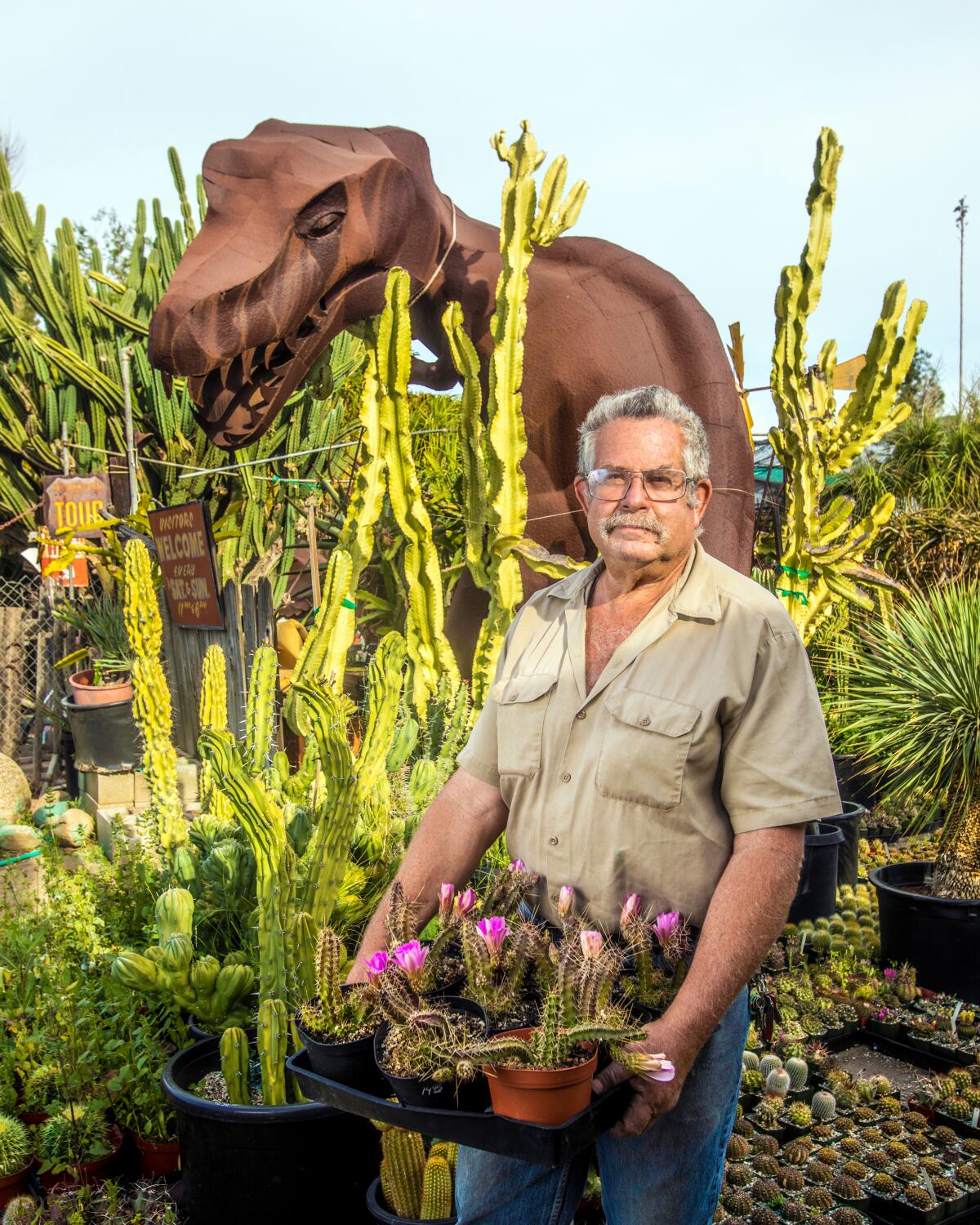
1. The land of dinosaurs and cactus is closer than you think. Here’s where to go. I don’t know why but I find barrel cactus and agaves paired with toothy metal dinos hard to resist. It’s an L.A. place few know, a wholesale nursery in Reseda that’s open to the public only on weekends. “And that’s kind of what makes California Nursery Specialties Cactus Ranch a magical secret place, the way Diagon Alley in the Harry Potter books was open only to shoppers in the know,” this Times story says.
The best part is that it’s crammed with native plants for anyone in need of “succulent therapy.” “I make all the money I need during the week,” owner David Bernstein told The Times. “So on weekends, I think of this as a sanctuary, a kind of therapy for people shut off from the natural world. We’re not just selling plants; we’re horticultural therapists here.” Check out stunning photos of the ranch and the full story here.
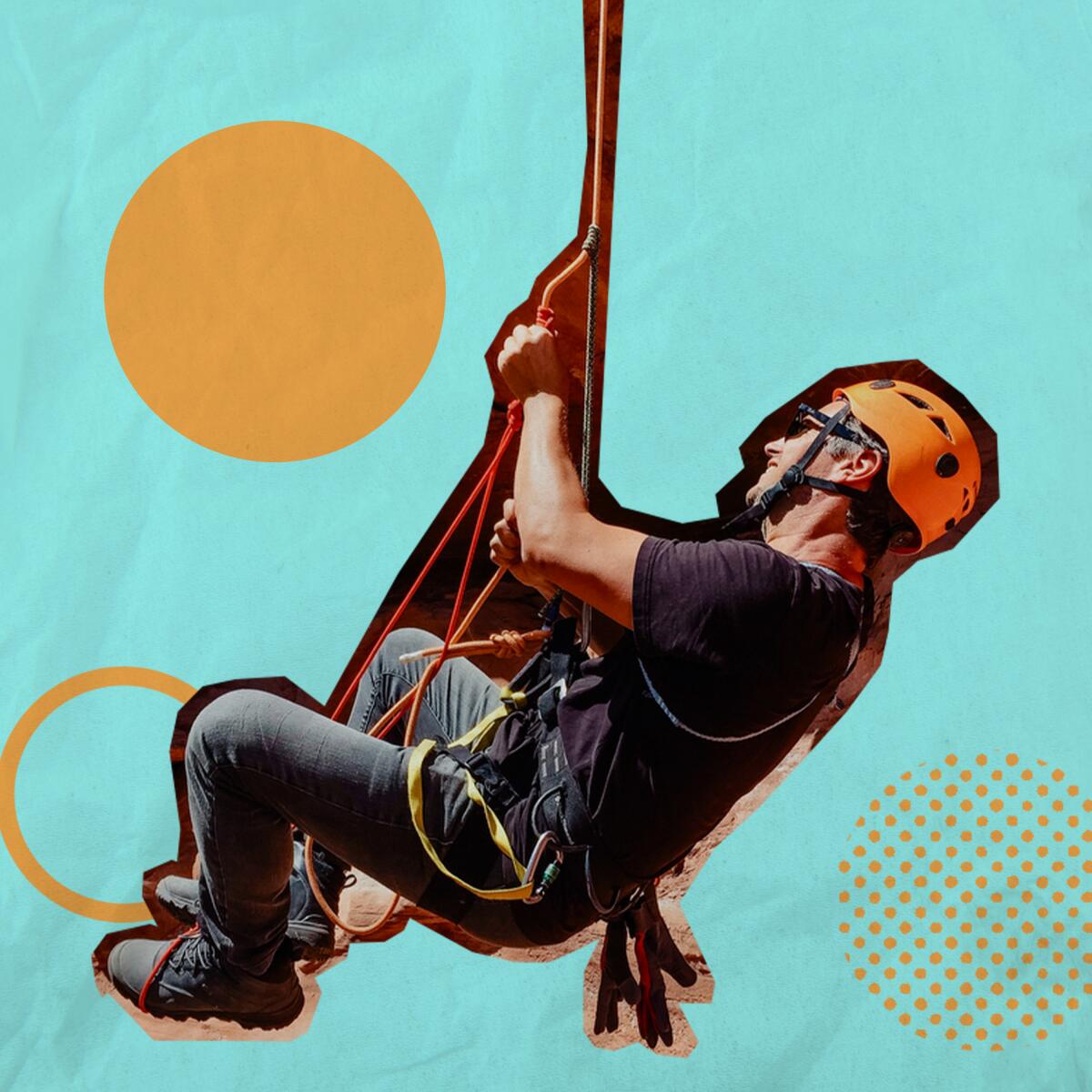
2. Want to try canyoneering? Read this first. Edmund Vallance breaks down what it means to learn how to put on a helmet and rappel in a “PG-13-rated [slot] canyon” in Utah. His story starts with a conversation with Aron Ralston, who became trapped in a canyon not far from where Vallance was starting out. “Within an hour of being trapped, I knew I had to cut off my arm,” Ralston told him. “Of course, my knife was so dull I couldn’t saw through the skin. It took me until Day 4 to figure out that the only solution was to stab myself.” OK, not the best advertisement for canyoneering. But Vallance learned from an experienced guide (he didn’t go alone) the grit of what canyoneering is all about (read the full story here).
Southern California has some great canyoneering spots if you know where to go and what you’re doing. Start by learning the basics with Uber Adventures, which offers in-person courses in L.A. year-round starting at $100 per person. In the beginner class, you’ll learn everything from “what’s a harness” to rappelling to how to build anchors, said owner Klaus Gerhart. “Even someone who has had a taste of canyoneering would learn a heck of a lot in this class,” Gerhart said. More information here.
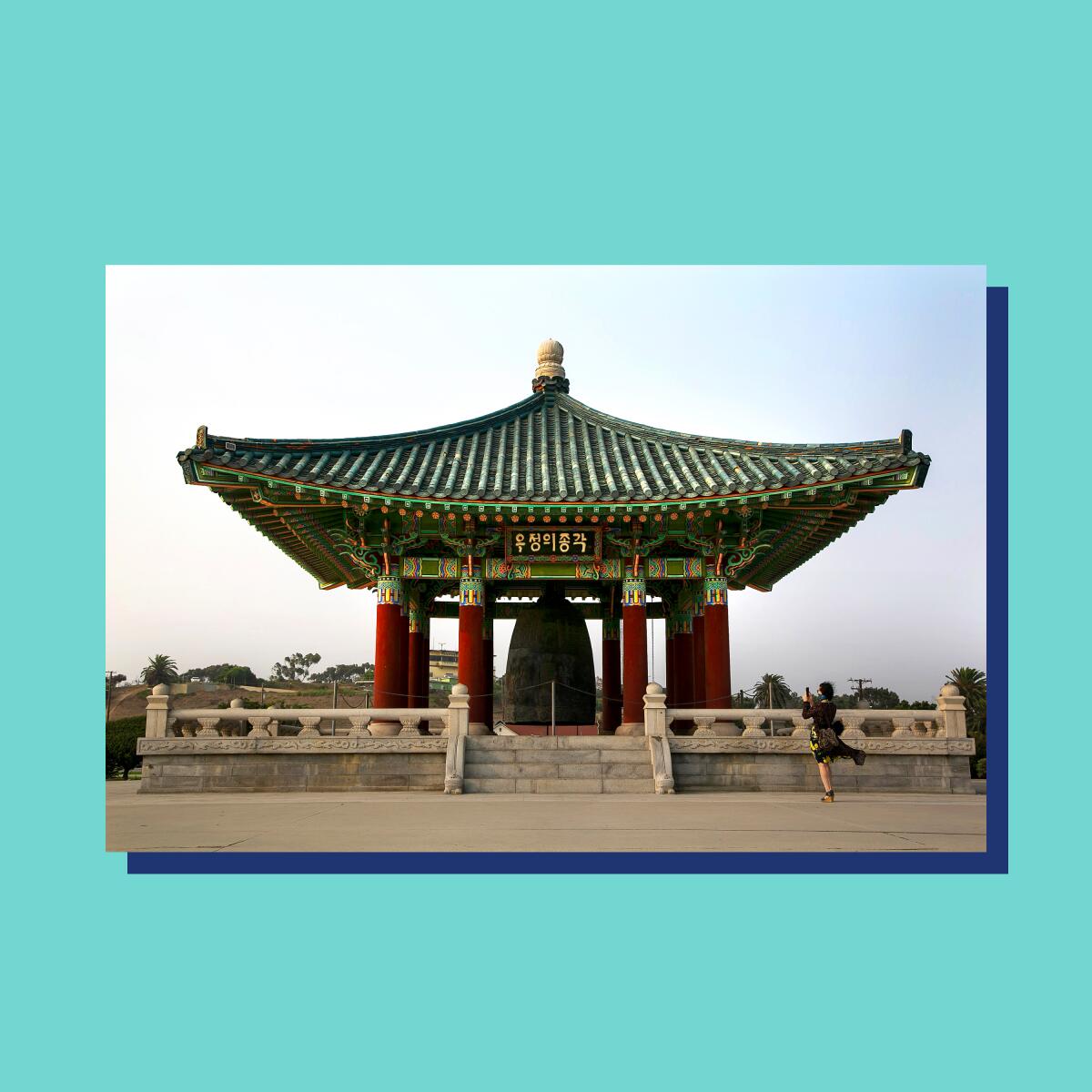
3. Plan an urban walk to L.A. landmarks during Asian American and Pacific Islander Heritage Month. Where are statues of Bruce Lee and surfing legend Duke Kahanamoku?And where’s that Eddie Van Halen mural (his mom was born in Indonesia)? L.A. Tourism drew up a compelling list of touchstones of AAPI Culture for us to take to heart.
For ready-made itineraries, here’s a self-guided tour of L.A.’s K-Town from the L.A. Conservancy. If you want to nibble while you walk, dive into cultural cuisines with the Dining and Drinking Guide to Historic Filipinotown, which is on the edge of Echo Park and Silver Lake, and a walking tour of the lesser-known Sawtelle Japantown on the Westside. What better way to learn more about the city?
The red flag
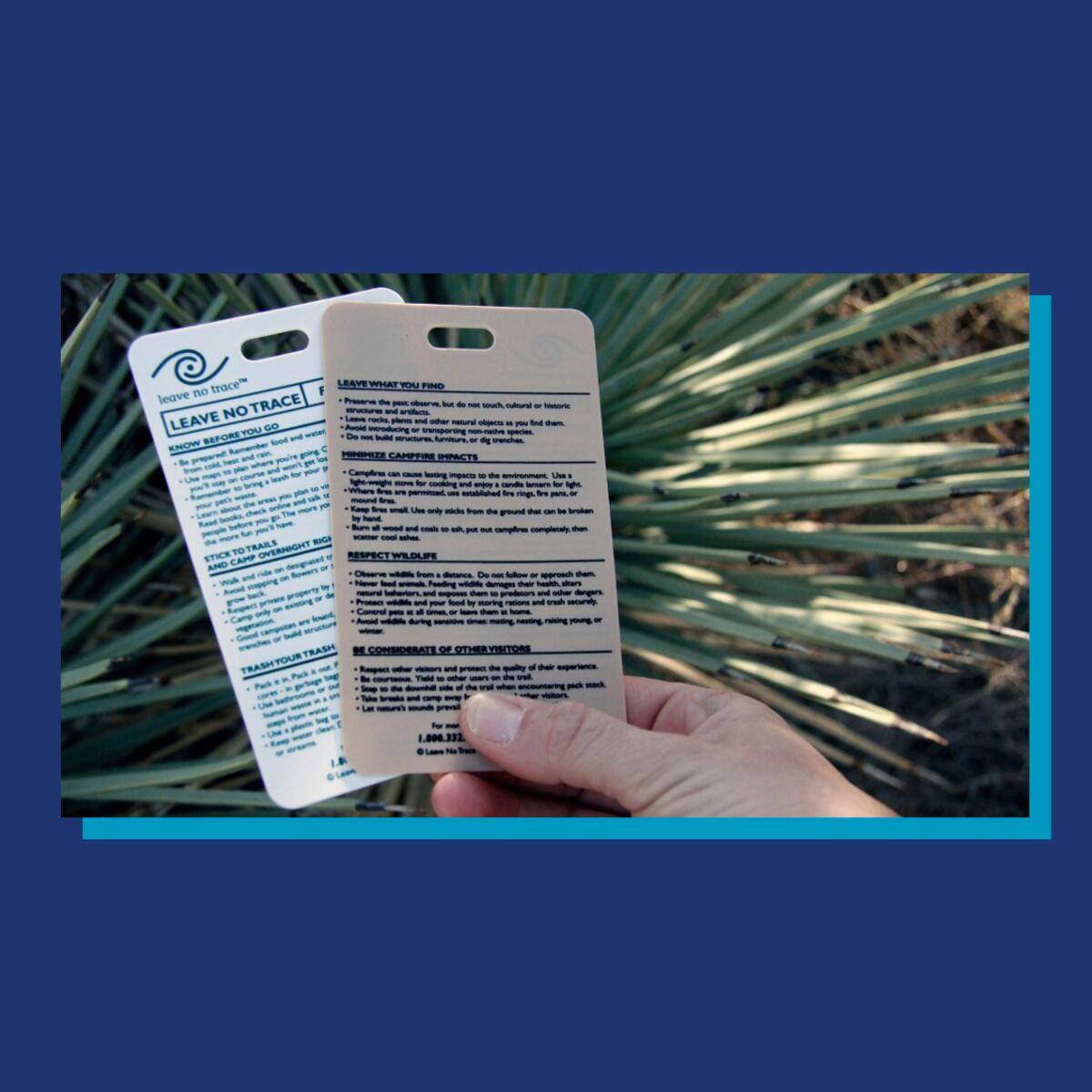
There’s so much to do in national parks — and a lot you can’t do too, such as:
- hitting golf balls. A golfer is under investigation after Instagram posts allegedly showed him teeing off in Yellowstone and other parks. He’s not the only one either.
- growing pot in an under-visited area. Death Valley National Park recently discovered 40 acres of marijuana plants in remote Jail Canyon on the western side of the Panamint Mountains, which is now closed. “Marijuana grow sites significantly damage and destroy the park’s natural and cultural resources by introducing pesticides, land clearing, poaching and waterway modifications,” the park’s news release said.
- spray-painting or tagging rocks with “art.” Think I’m kidding? Boulders in the Mojave Desert last year were tagged with “COVID-19 2020” and a sad-faced emoji as well as other scribbles, according to this Desert Sun story. In 2016, a woman was banned from 524 million acres of public lands for two years after decorating rocks from Death Valley to Crater Lake in Oregon. In 2015, artist André Saraiva found out the hard way that tagging a boulder in Joshua Tree, even with water-based paint, isn’t OK. He was fined $275.
Of course, you don’t do any of those things. I don’t either. But maybe we’re doing other things wrong. How would you know? Luckily, there are agreed-upon rules called Leave No Trace principles that started in the 1980s. They are designed to make sure you leave any wild place as you found it. Here are some highlights:
- Dispose of waste properly. That means whatever you brought — trash, spilled or leftover food, litter — goes home with you. That’s right, pack out used toilet paper and hygiene products (when you’re not able to use a toilet). It’s not OK to leave TP on a hillside or along a trail. Got that?
- Leave what you find. Families with young children should know it’s important to train kids not to take home rocks, flowers, frogs or anything that’s part of the natural habitat. This is especially true for sensitive places such as tide pools as well as cultural or historic locations such as petroglyphs. “Take only photos, leave only footprints,” is how this principle is often expressed.
- Be considerate of other visitors. That means letting others pass, not imposing on their experience and avoiding “loud voices and noises,” so we can all listen to nature.
Here’s the entire Leave no Trace list. If you can’t remember the rules, download them on your phone or take along an explainer that fits in your pack. Please, take them to heart.
Wild things
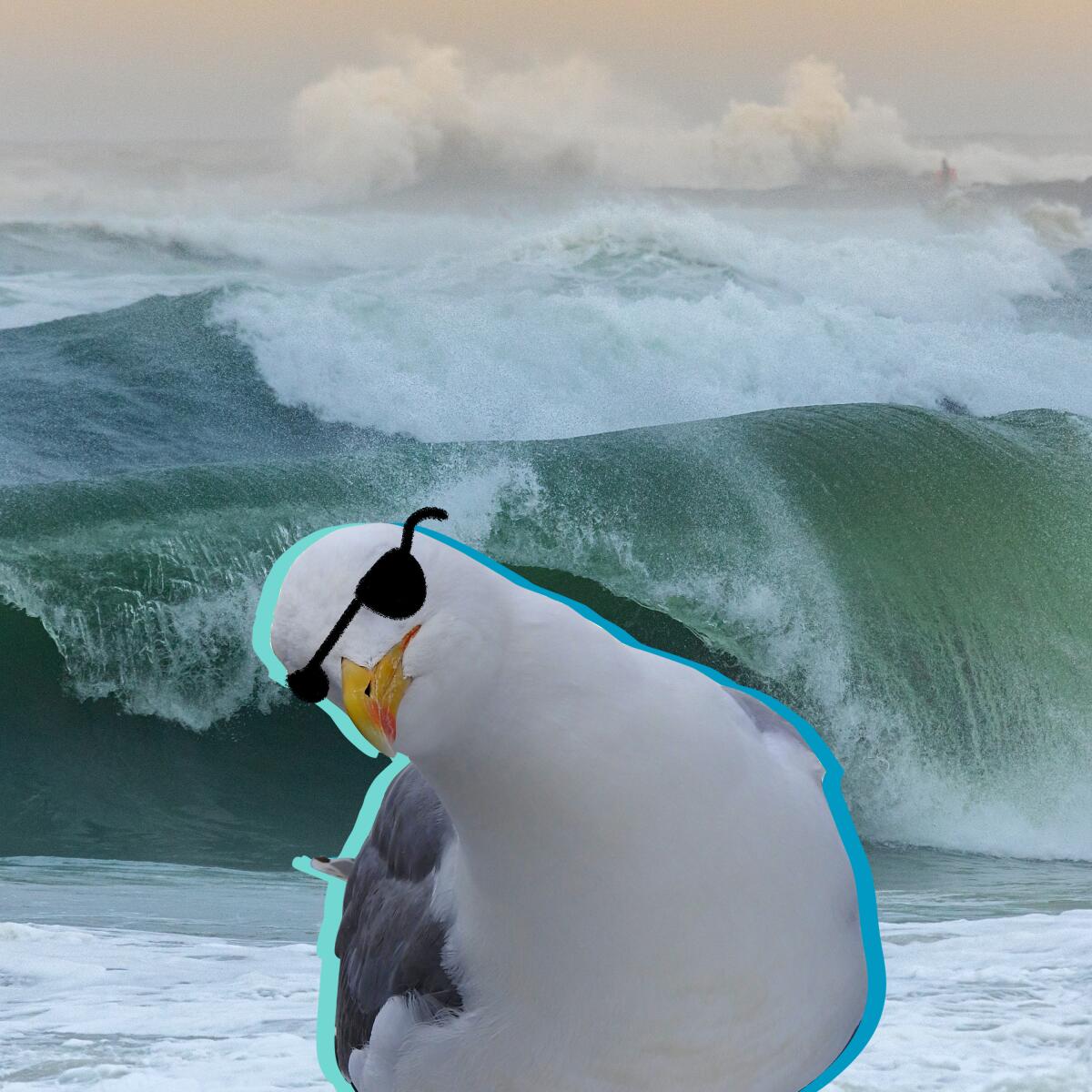
Love the smell of seagull poop? Then visit Anacapa Island in Channel Islands National Park right now. My colleague Christopher Reynolds wrote this story about the “carnage and shrieking” after visiting last year. It’s because the 1-square-mile island is the largest Western gull rookery in the West. The gulls you see on Southern California beaches probably started their lives there.
It sounds compelling for wildlife watchers, but tread carefully. Here’s what the warning on the park’s website says: “Western Gulls Nesting on Anacapa Island From April Through Mid-August: During this time, visitors will encounter seabird rookery conditions: guano, strong odor, constant noise, bird carcasses, and birds protecting their territory. If visitors consider these conditions adverse, it is advised that they visit another island.”
Cool stuff
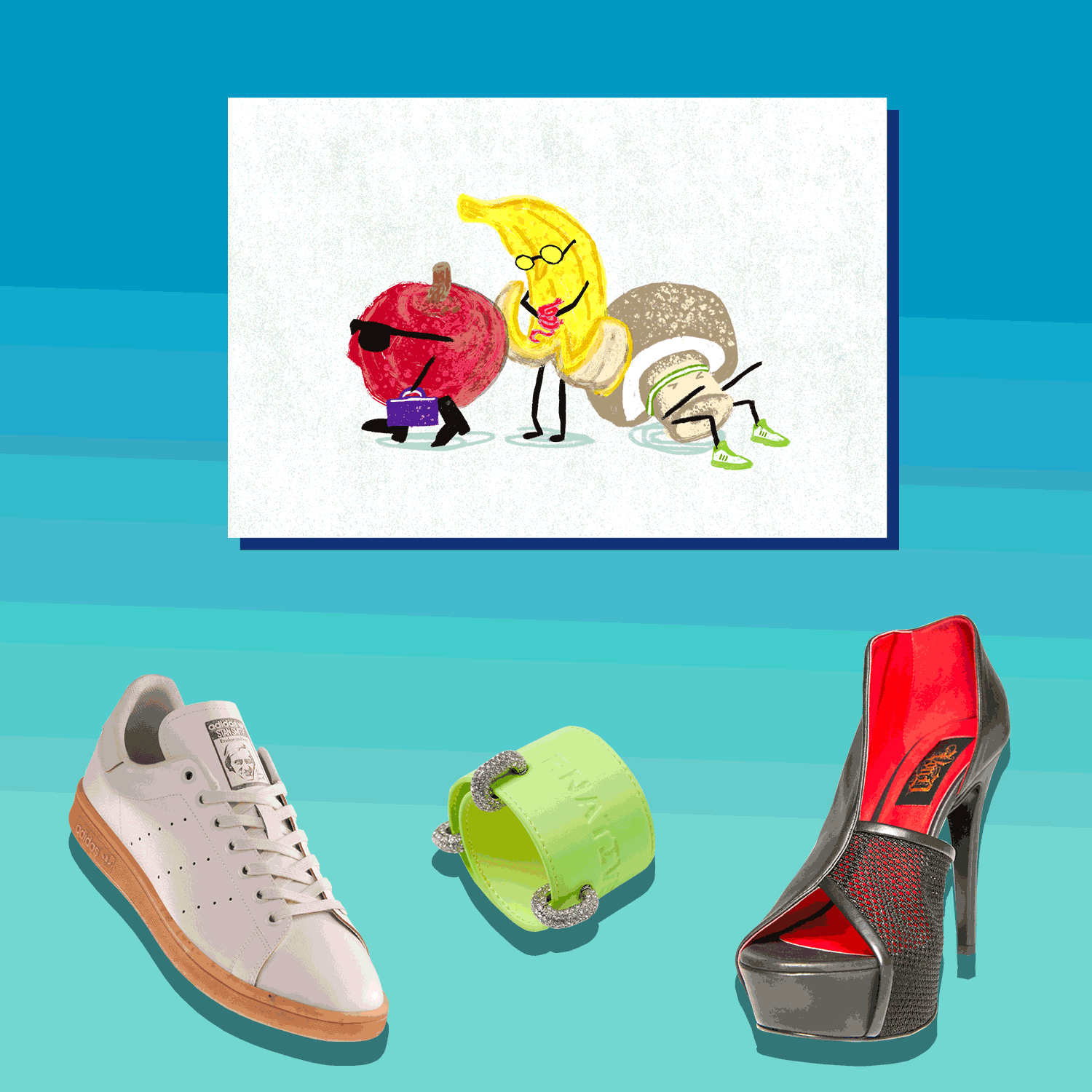
Ready for farm-to-closet fashion? My colleague Adam Tschorn wrote about L.A.’s role in making sure you get your fruits and vegetables — in wearable form. Some examples: Totes made from Bananatex consist of (no surprise) banana plant fibers; L.A. brand Clae makes footwear using cactus leather; and L.A.-based Von D Shoes makes an attractive fake leather shoe from compressed apples. Prices aren’t cheap, but the items show what’s possible in the non-leather world. Check out more examples of innovative style in the story.
The must-read
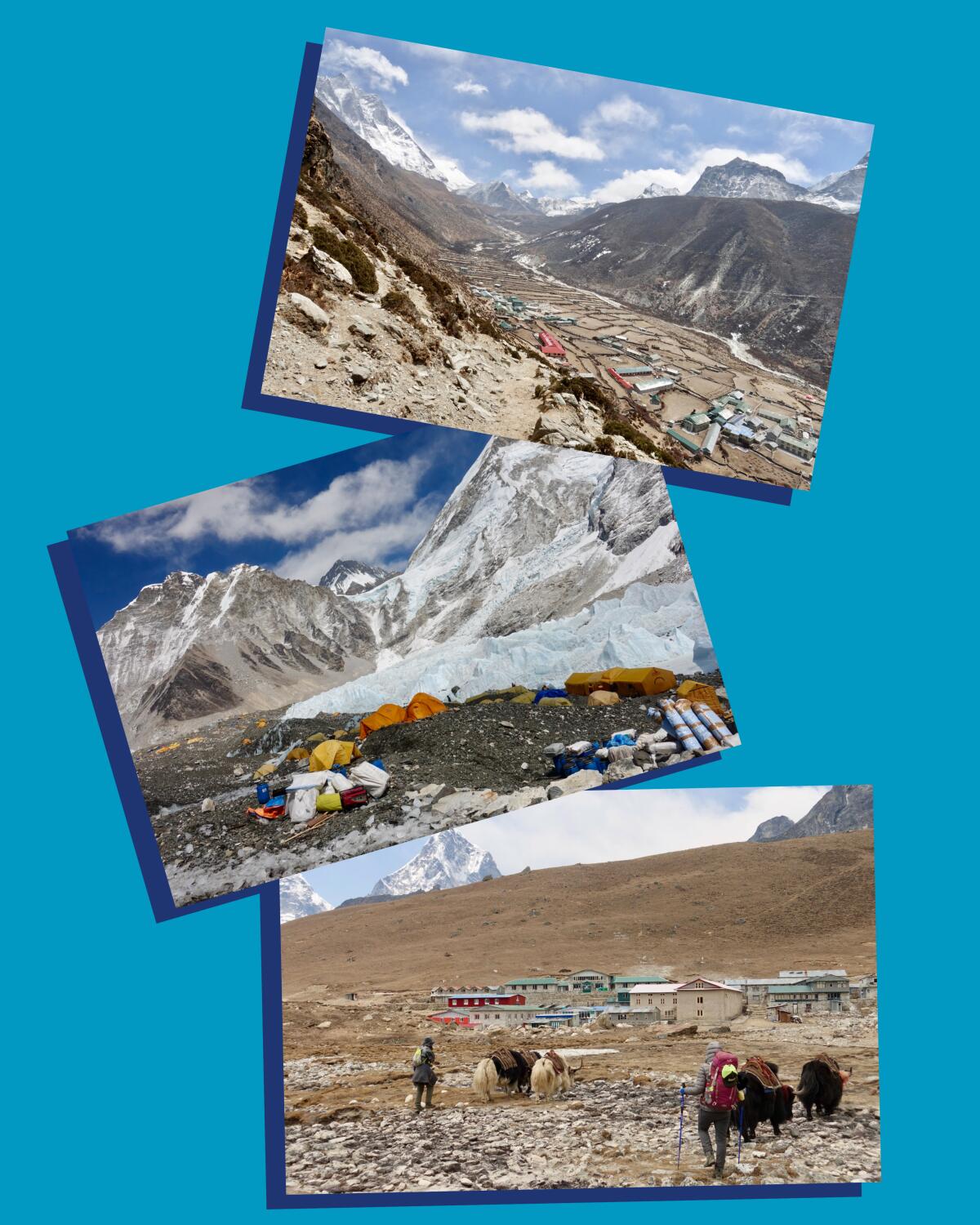
Businesses at the base of Mt. Everest are desperate for tourists. Nepal, like India, is in the midst of a coronavirus surge. About 17 cases were reported at Everest Base Camp at 17,598 feet on the Nepal side of the mountain, though some say that number seems low, according to media reports. The government reopened the world’s highest mountain in hopes of regaining tourism dollars after last year’s lost season.
But it’s not elite climbers who pay big bucks to summit the 29,032-foot peak who bring hope to high-elevation businesses. It’s the trekkers who spend at least a week getting to base camp, which is in a town called Namche Bazaar.
This Times story explains: “Namche Bazaar is a five- to seven-day hike from the nearest road; goods are delivered via plane from Kathmandu to Lukla, then by helicopter or porter from Lukla to Namche. The shipping fee for a 2-liter bottle of Coke hovers around $2.60 — more than many Nepalis earn in a day. And Namche Bazaar is more accessible than most villages in upper Khumbu. Such costs make starting a business in the region a daunting commitment.
“Nonetheless, investing in the Everest region’s tourism industry had seemed like a sure bet before the pandemic. The number of annual visitors to Sagarmatha National Park grew from about 5,000 in 1981 to 32,000 in 2010 to 58,000 in 2018. By the fall of 2019, Namche Bazaar — a town of fewer than 2,000 residents — was home to 53 lodges with a capacity of 2,300 beds. And still, this was not always enough.”
As of March, just 255 visitors visited the area, down from 7,993 people in 2019. Mingma Sherpa, chairperson of the town’s Lodge and Hotel Assn., told The Times: “We have 53 lodges. The trekkers go to all lodges. We need the trekkers.” Read the full story here.
Listen up
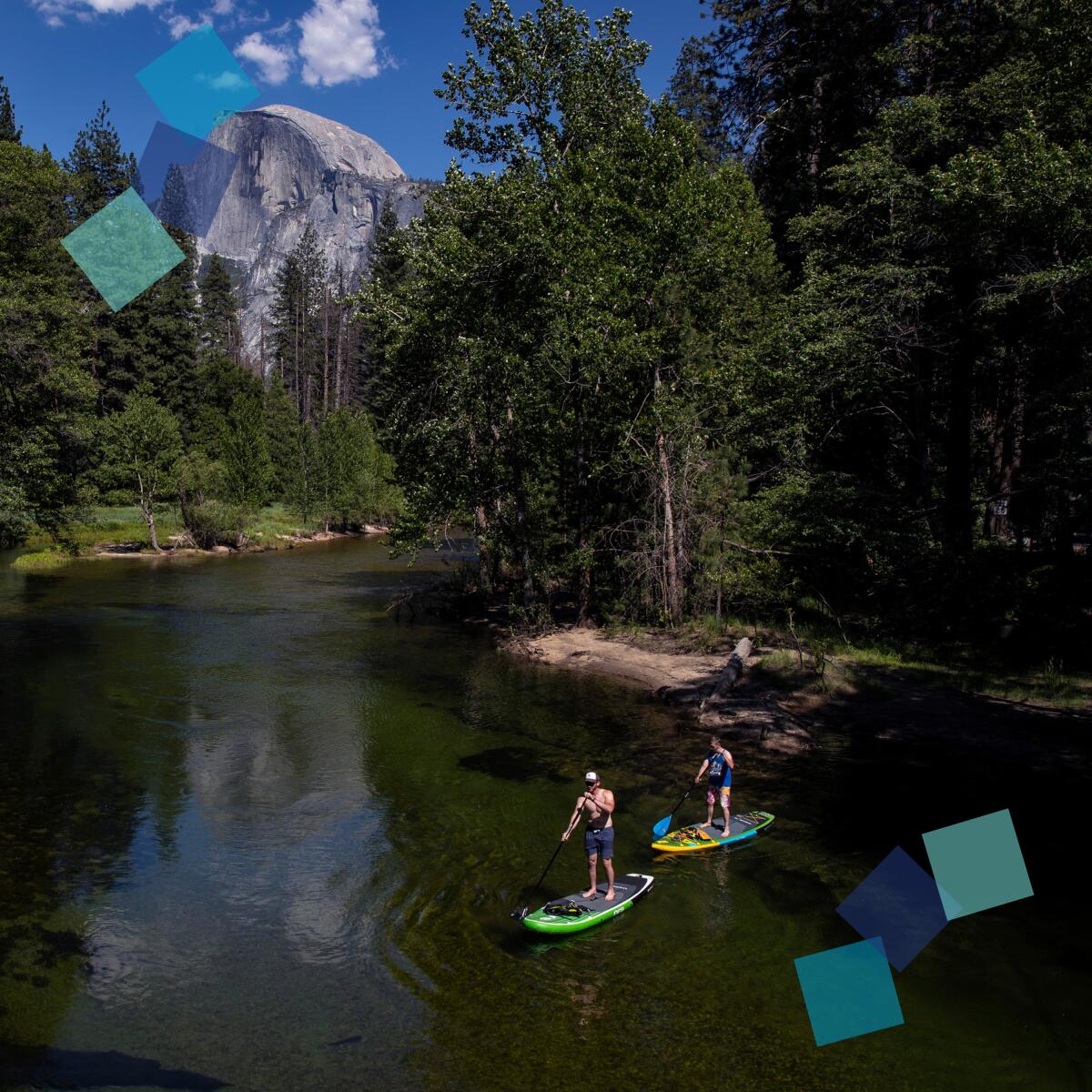
Thanks, Tim Fain, now I know what Yosemite’s beauty sounds like. The classical violinist composed “Glacial,” an original score to accompany California’s famous national park. It won’t make you want to charge up Half Dome; it will make you want to stop and reflect as you gaze at the rock monolith. The music is paired with park landmarks by videographer Nick Jones. Take a minute to soothe yourself with this video interlude produced for the Sierra Club Artist Series. Bring it along on your next trip to the park. Ahhhhh...
P.S.
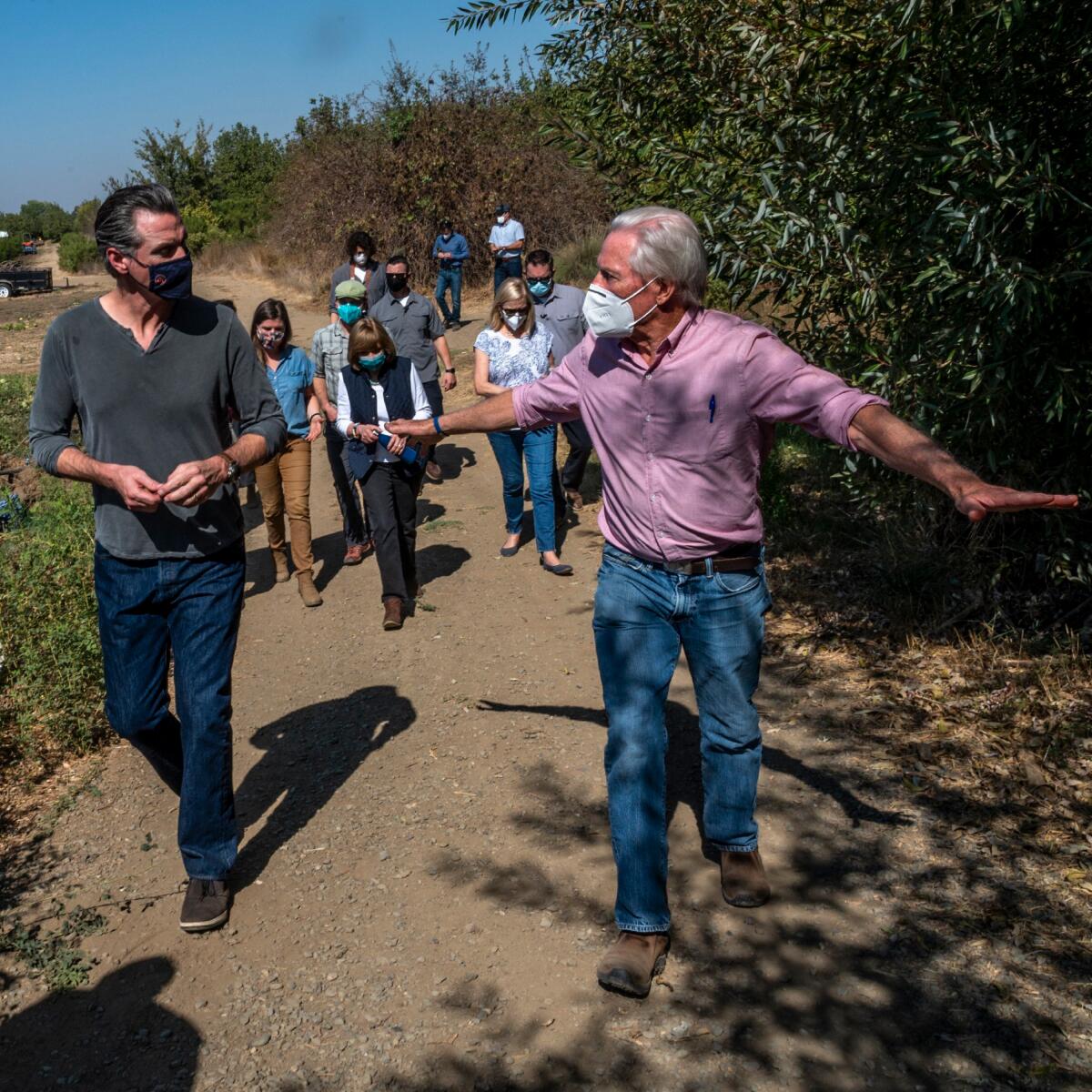
In October, Gov. Gavin Newsom signed an executive order called 30 X 30, which commits California to protect 30% of the state’s land and coastal waters by 2030. It also will identify strategies to “accelerate and expand climate-smart land management” and reduce climate risks across the state. These are big goals, with a new California Biodiversity Collaborative being formed to make it happen. What lands do you want to see protected and what strategy should we use to move forward? You have until Friday to make your voice heard.
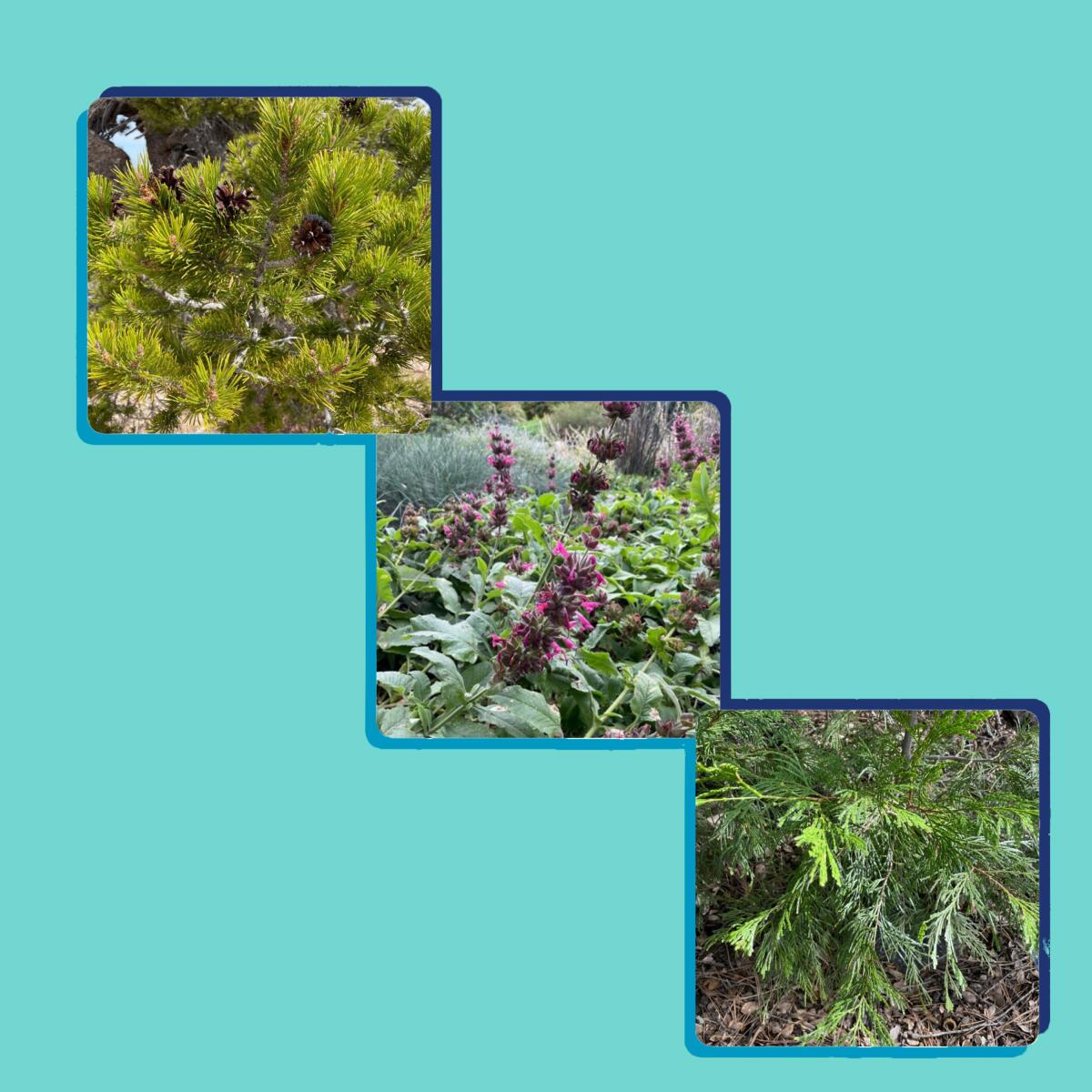
The results of the City Nature Challenge that started April 30 drew more than 1.2 million observations worldwide by more than 50,000 people. Los Angeles County notched 22,037 observations that identified 2,638 species submitted by 1,507 people. I was one of them. I snapped and uploaded photos of snow plant, California incense cedar, lodgepole pine and a dozen other species that were found during a hike in the Crystal Lake area of the Angeles National Forest. The most observed species was the Western fence lizard (468 submissions) and the top observer bagged 992 species. Click here to find out more about species found in L.A. County.
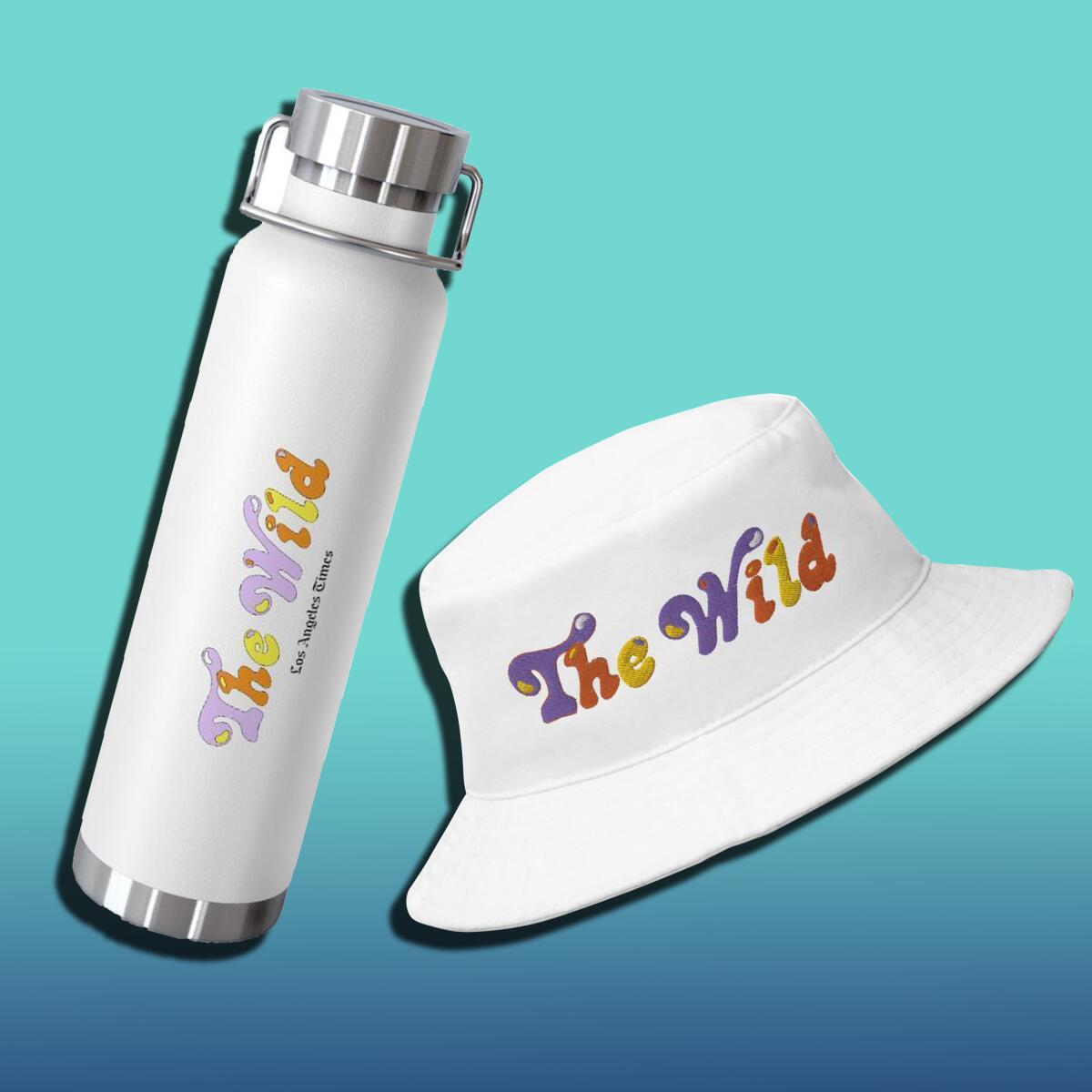
Want something new to wear on the trail this summer? Add a white, sun-reflecting bucket hat with The Wild logo to your hiking wardrobe. You can pick up a branded water bottle too. Click here to order.
Send us your thoughts
Share anything that’s on your mind. The Wild is written for you and delivered to your inbox for free. Drop us a line at TheWild@latimes.com.
Click to view the web version of this newsletter and share it with others, and sign up to have it sent weekly to your inbox. I’m Mary Forgione, and I write The Wild. I’ve been exploring trails and open spaces in Southern California for four decades.

Sign up for The Wild
We’ll help you find the best places to hike, bike and run, as well as the perfect silent spots for meditation and yoga.
You may occasionally receive promotional content from the Los Angeles Times.




